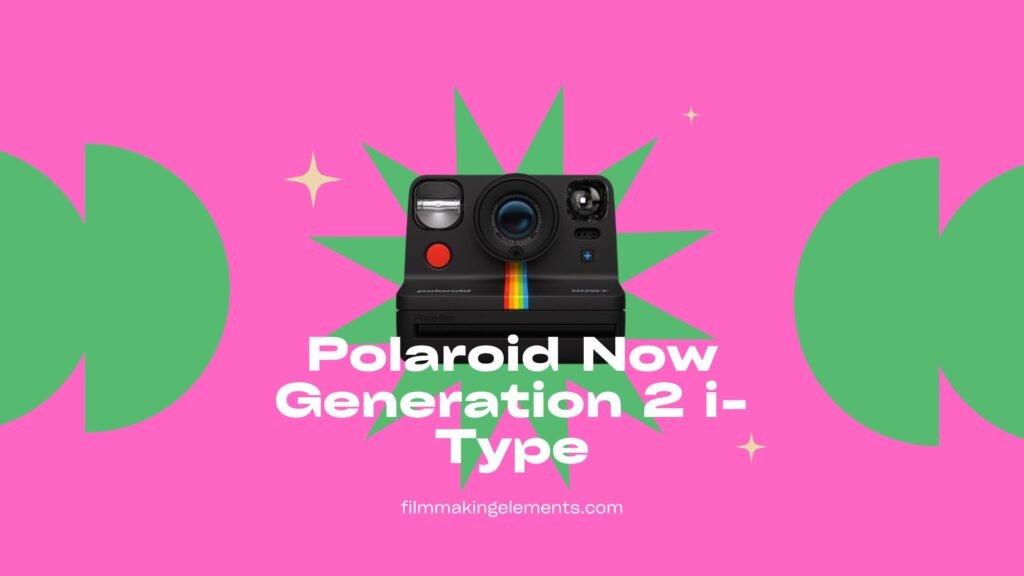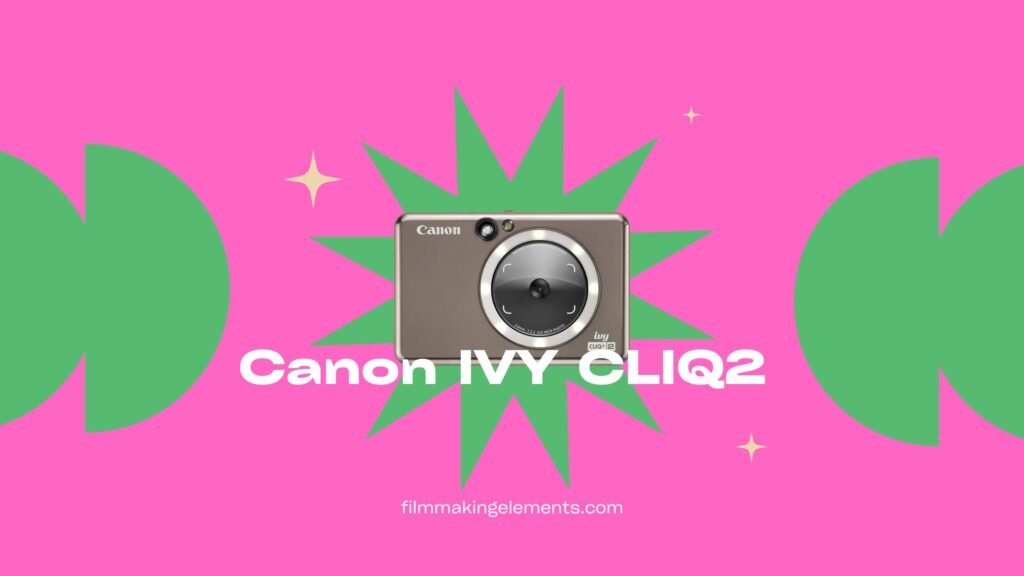I love instant photography. There is something magical about capturing a moment and holding it in your hands. That’s why I was excited to try out the Fujifilm Instax Mini 12. But as much as I enjoyed using the Mini 12, I was curious to see what other options are out there. So I did some research and found three alternatives that offer different features, designs, and film formats. In this article, I will share my experience with these cameras and compare them with the Mini 12. Here are the top three Fujifilm Instax Mini 12 alternatives that you should know about.
1. FUJIFILM INSTAX MINI 40

Being deeply invested in the world of instant photography, I’ve had hands-on experience with both the FUJIFILM INSTAX MINI 40 and the FUJIFILM INSTAX MINI 12. Let’s dive deeper into the FUJIFILM INSTAX MINI 40 as an alternative to the MINI 12.
Film Format
Both these cameras employ the FUJIFILM INSTAX MINI instant film, resulting in credit card-sized prints (86 x 54 mm) with a picture frame of 62 x 46 mm. I’ve played with various designs like plain white, rainbow, monochrome, and candy pop – each pack giving me 10 beautiful exposures.
Image Quality
While both cameras’ image quality relies heavily on lighting and exposure settings, I observed a marked difference. The MINI 40 houses a lens with an aperture of f/12.7, a tad faster than the MINI 12’s f/14. This lends the MINI 40 an upper hand in low-light scenarios, offering brighter images. The MINI 40’s high-key mode is a delightful touch, allowing for brighter, softer images.
Camera Size and Style
Aesthetically, the MINI 40 is a retro lover’s dream. It boasts a classic look with a black body, silver accents, and a textured finish. Weighing 330 g and measuring 104 x 121 x 65 mm, it’s a joy to hold and operate.
On the flip side, the MINI 12 is a burst of modernity with its pastel shades like blush pink and ice white. With its weight of 306 g and dimensions of 104 x 66.6 x 122 mm, it’s slightly more compact.
Lens and Focus
Both models feature a fixed 60 mm lens, equivalent to about 35 mm in traditional photography. However, they diverge in their focusing capabilities. The MINI 40 has a standard range from 0.3 m to infinity. Its standout feature is the selfie mode, covering 0.3 m to 0.5 m, activated simply by pulling out the lens barrel. This mode doubles as a close-up feature, and the front lens mirror is a nifty addition for framing those selfies.
Contrarily, the MINI 12 covers a range from 0.5 m to infinity. For close-ups at 0.3 m, it requires an additional lens attachment. While it has a mirror, lacking a dedicated selfie mode means manual adjustments for exposure and flash are essential.
Battery Type and Life
Energy-wise, both rely on two AA-size alkaline batteries (LR6). From my use, they last for roughly 10 instax mini film packs, translating to 100 shots, though this can vary with usage patterns.
Additional Features
Both cameras shine with their built-in flash, especially in dim conditions. For the MINI 40, the effective flash range is between 0.3 to 2.7 m with a recycle time of 6.5 seconds or less. The MINI 12, on the other hand, spans from 0.3 to 2.2 m with a slightly longer recycle time of 7 seconds or less.
Other features that impressed me in both models are the film counter, film pack confirmation window, and the 5-minute auto power-off feature. And let’s not forget the matching strap, which adds a touch of style.
Price
Now, onto the investment. Typically, the MINI 40 is priced around $100 USD, while the MINI 12 sits at about $70 USD. Of course, these figures might change based on region and demand.
2. Polaroid Now Generation 2 i-Type

As someone who has extensively experimented with instant cameras, I have a wealth of experience with both the Polaroid Now Generation 2 i-Type and the FUJIFILM INSTAX MINI 12. I’d love to share my insights on the Polaroid Now Generation 2 i-Type as a worthy alternative to the FUJIFILM INSTAX MINI 12.
Film Format
When I use the Polaroid Now Generation 2 i-Type, I’m particularly drawn to its film choices. This camera uses the Polaroid i-Type and 600 film, yielding square prints of 86 x 108 mm, with the image coming out to 79 x 79 mm. It’s exhilarating to switch between different film styles, be it color, black and white, the luxe gold frame, or even the Star Wars edition. And each pack? That gives you 8 distinct memories.
The FUJIFILM INSTAX MINI 12, however, goes a different route. It employs the INSTAX MINI film. The result is a handy, credit card-sized print, measuring 86 x 54 mm with an image size of 62 x 46 mm. The film options are numerous too – plain white, rainbow, monochrome, sky blue, macaron, and candy pop, to name a few. You get 10 shots in every pack.
Image Quality
As someone who values top-notch image quality, the lighting adjustment feature in both these cameras is a boon. The automatic exposure function is adept at modifying the shutter speed and flash output based on ambient lighting. But the Polaroid Now Generation 2 i-Type has an edge with its manual controls – think aperture priority, light painting, manual mode, and double exposure. It’s a creator’s dream! The lithium-ion battery here is commendable, outlasting the AA batteries of the FUJIFILM INSTAX MINI 12.
Camera Size and Style
The feel and aesthetic of a camera are vital. The Polaroid Now Generation 2 i-Type exudes a vintage aura with its classic black body adorned with silver accents. Its textured surface and substantial grip are reminiscent of iconic Polaroid models. Dimension-wise, it stands at 150 x 111.2 x 94 mm and weighs a sturdy 445 g (sans batteries, strap, and film).
In contrast, the FUJIFILM INSTAX MINI 12 has a more youthful vibe. Its smooth facade, rounded corners, and pastel hues (blush pink, sky blue, charcoal gray, ice white, lilac purple) make it appealing to a younger audience. More portable, it measures 104 x 66.6 x 122 mm and tips the scale at 306 g (without batteries, strap, and film).
Lens and Focus
Equipped with a fixed lens approximating 35 mm in full-frame equivalence, both cameras are versatile. However, the Polaroid Now Generation 2 i-Type boasts an autofocus system. It can toggle between two fixed focus zones: one for regular shots (0.55 m to infinity) and another for close-ups (0.3 m to infinity). It even comes bundled with five lens filters, multiplying your creative avenues.
The FUJIFILM INSTAX MINI 12 offers a standard shooting range of 0.5 m to infinity. For closer shots at 0.3 m, you’d need to affix a close-up lens attachment. This attachment features a mirror, aiding in those impromptu selfies. A caveat: there’s no dedicated selfie mode. Adjustments for exposure and flash have to be made manually.
Battery Type and Life
The Polaroid’s advanced lithium-ion battery is a gem. Charging through USB-C, it endures approximately 15 packs (each of 8 exposures). The FUJIFILM INSTAX MINI 12, however, leans on two AA-size alkaline batteries. They last around 10 packs, each having 10 exposures. A minor hitch: the bundled batteries are merely for trial.
Additional Features
Both cameras flaunt built-in flashes, automatically illuminating in dim settings. The effective range is 0.3 to 2.7 m for the Polaroid and 0.3 to 2.2 m for the FUJIFILM. As for flash recycle times, the Polaroid clocks in at under 6.5 seconds, while the FUJIFILM takes slightly longer at under 7 seconds. Other shared features include a film counter, film pack confirmation window, an auto power-off function post 5 minutes of inactivity, and a matching strap.
Price
Currently, as of November 2023, the Polaroid Now Generation 2 i-Type hovers around the $120 mark, while the FUJIFILM INSTAX MINI 12 is priced closer to $70. Naturally, this could vary based on region and retailer availability.
3. Canon IVY CLIQ2

Canon IVY CLIQ2 as a Good Alternative for FUJIFILM INSTAX MINI 12. I’m putting two of my favorites head-to-head: the Canon IVY CLIQ2 and the FUJIFILM INSTAX MINI 12. Let’s dive in.
Film Format
Having clicked hundreds of shots with the Canon IVY CLIQ2, I’ve grown fond of its ZINK (Zero Ink) technology. This camera does away with the need for ink cartridges or traditional film packs. Instead, it cleverly leverages special paper embedded with dye crystals. Each snap measures 2×3 inches and costs roughly about $0.44.
On the other hand, my FUJIFILM INSTAX MINI 12 uses the Instax Mini instant film. This chemical-based film, once exposed to light, unveils the image. Each print sits at 54×86 mm (2.1×3.4 inches) with an actual image size of 62×46 mm (1.8×2.4 inches). Cost-wise, each print sets you back by approximately $0.70.
Image Quality
The Canon IVY CLIQ2, sporting an 8-megapixel sensor, promises a resolution of 314×600 dpi for its prints. While the image quality is acceptable, it doesn’t always deliver the sharpest results. Over time, I’ve noticed the prints tend to curl and fade. But, a silver lining is the Canon Mini Print app – it’s been indispensable in adjusting brightness, contrast, and adding filters before printing.
In contrast, the FUJIFILM INSTAX MINI 12, with its 60 mm lens, produces prints with a resolution close to 800×600 pixels. The results are consistently sharper and more vibrant. The glossy finish and retro feel of these prints are simply captivating. Though, you’ve got to be confident in your shot – no post-capture editing here, save for the high-key mode to brighten things up.
Camera Size and Style
I’m always on the move, so the Canon IVY CLIQ2’s compact size (121×80.3×22.4 mm) weighing just 188 g (minus batteries, strap, and paper) is a boon. Its colors – turquoise, rose gold, pearl white, and ruby red – are chic. The sizable selfie mirror and LED ring make selfie sessions a breeze.
The FUJIFILM INSTAX MINI 12, a tad larger at 104×66.6×122 mm and weighing 306 g, boasts a playful design. Its blush pink, sky blue, charcoal gray, ice white, and lilac purple variants have turned heads during my photoshoots. The round lens cap doubling as a shutter button and the close-up lens attachment are innovative touches.
Lens and Focus
The Canon IVY CLIQ2’s fixed-focus lens (equivalent to 35 mm in a full-frame setup) has served me well in most scenarios. Its f/2.2 aperture and 30 cm minimum focusing distance, coupled with the adaptive auto flash, are handy features.
However, the FUJIFILM INSTAX MINI 12, with its two-range focus lens equivalent to 34 mm in full-frame, offers more flexibility. Its f/12.7 aperture and 35 cm minimum focus distance, combined with the intuitive auto flash, have often given me better-lit shots.
Battery Type and Life
The Canon IVY CLIQ2’s inbuilt rechargeable lithium-ion battery is impressive. I can churn out around 25 photos on a single charge, and recharging is a swift 90-minute affair via USB.
With the FUJIFILM INSTAX MINI 12, I rely on two AA alkaline batteries. These last a solid 100 prints, but there’s no USB charging – a minor gripe.
Additional Features
The Canon IVY CLIQ2 shines with its microSD slot (supports up to 256 GB) and Bluetooth capabilities. Printing from my smartphone using the Canon Mini Print app, adorned with stickers, frames, and filters, has been a joy.
Conversely, the FUJIFILM INSTAX MINI 12 is straightforward – no digital storage or connectivity frills. But sometimes, simplicity is bliss.
Price
I got my Canon IVY CLIQ2 for $99.99, a deal sweetened by the included 10-sheet ZINK paper pack. Additional paper? $24.99 for a 50-sheet bundle.
The FUJIFILM INSTAX MINI 12, priced at $69.95, came with a 10-sheet Instax Mini film starter pack. I usually stock up on film at $34.99 for a 60-sheet pack.





